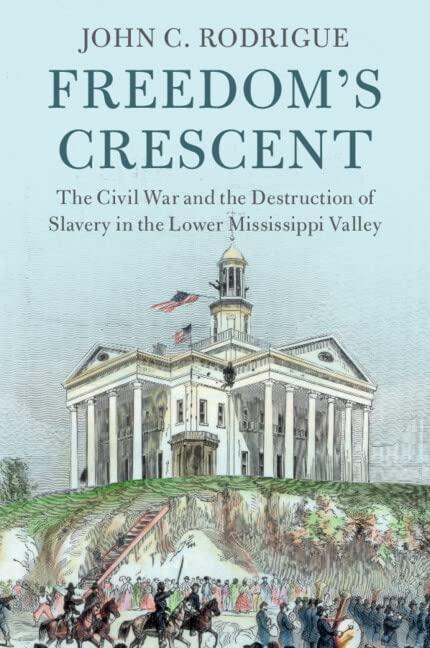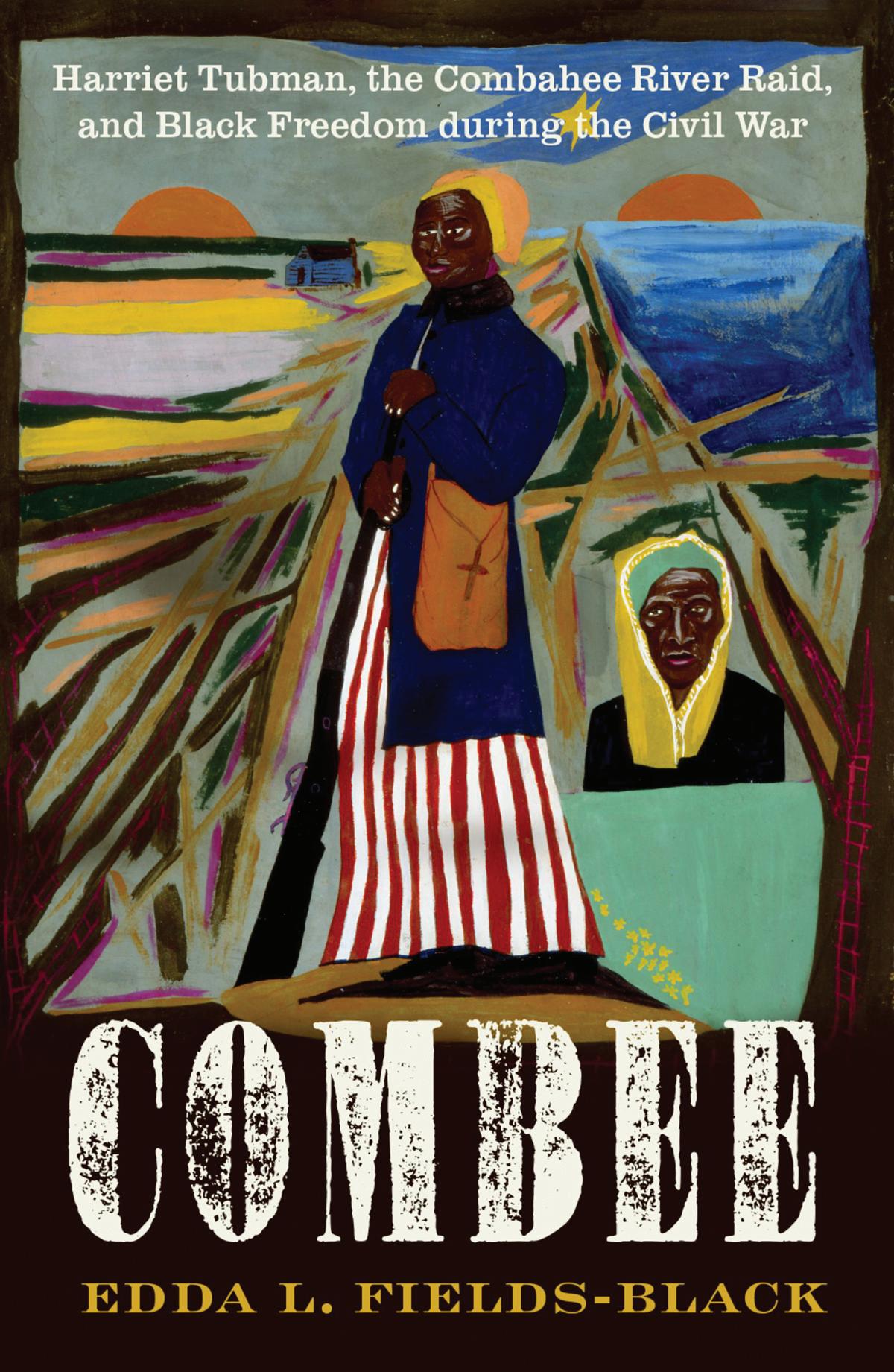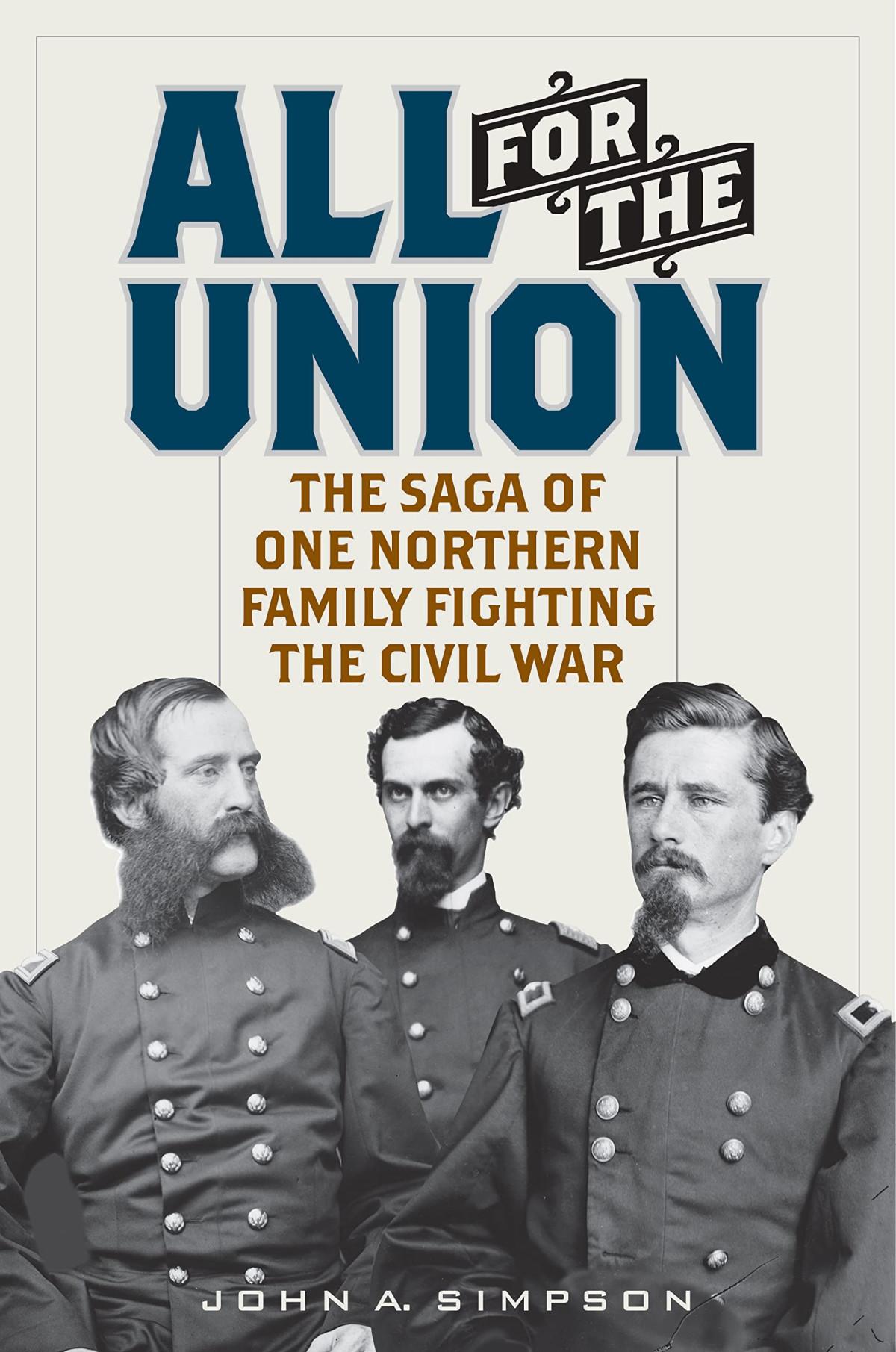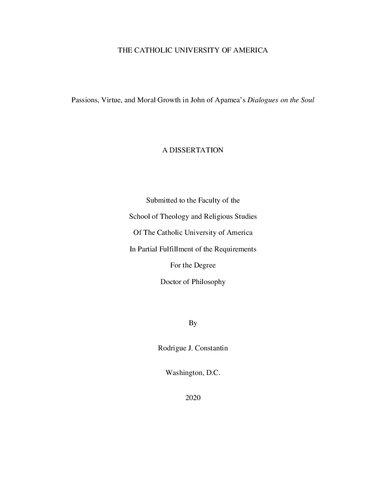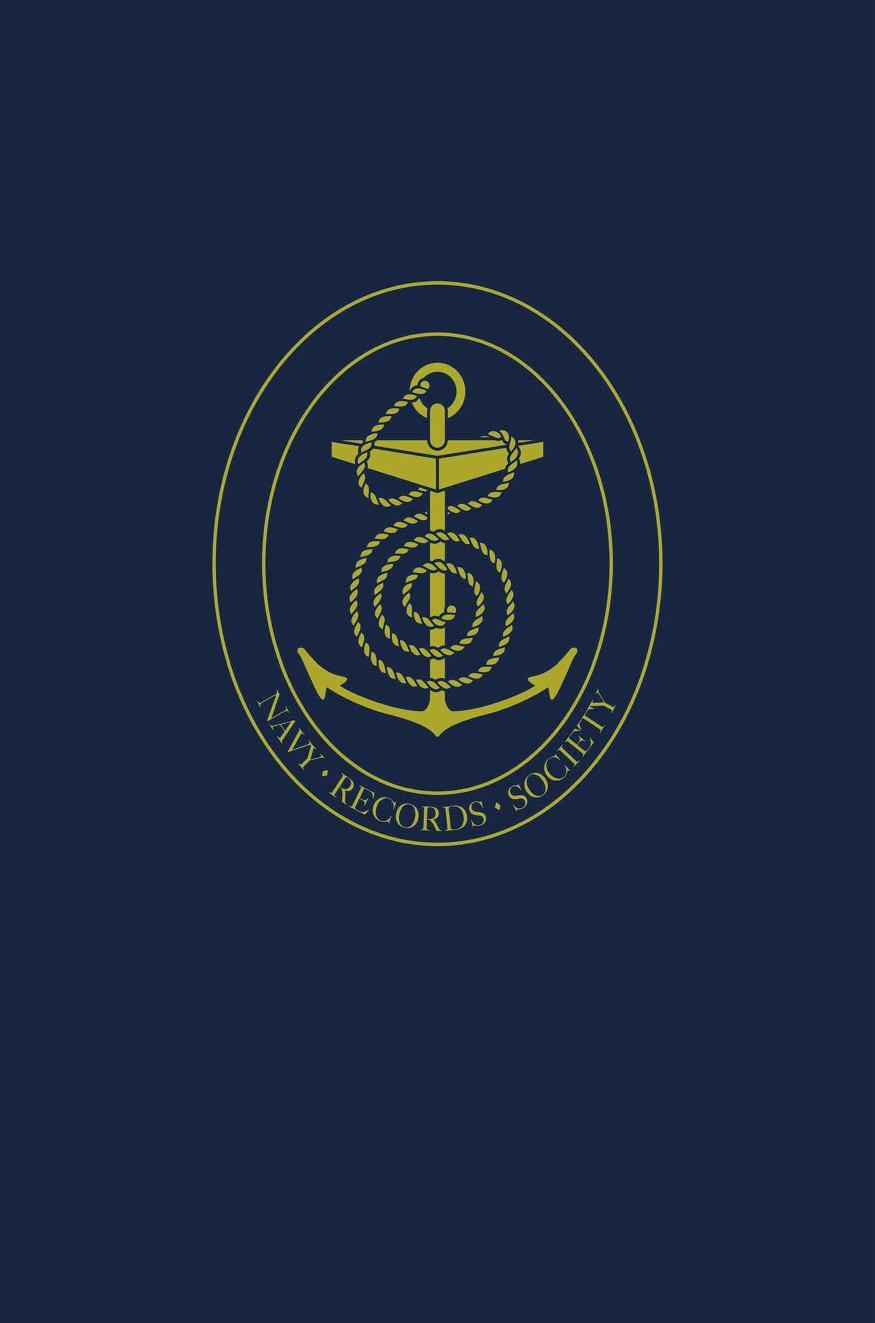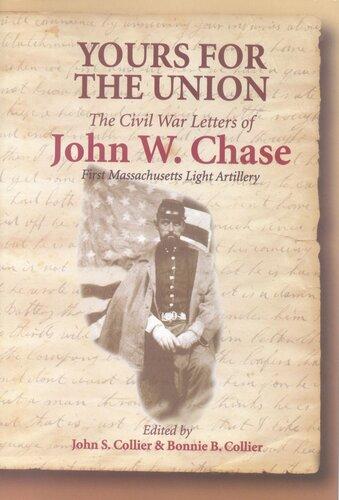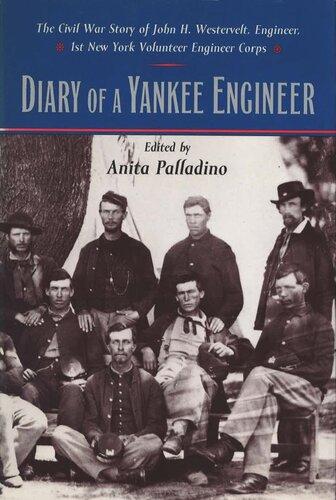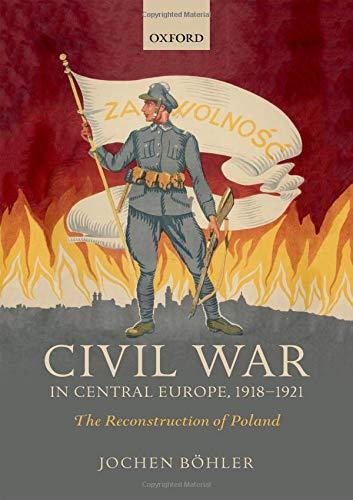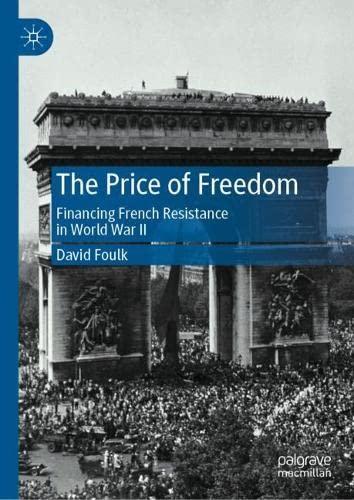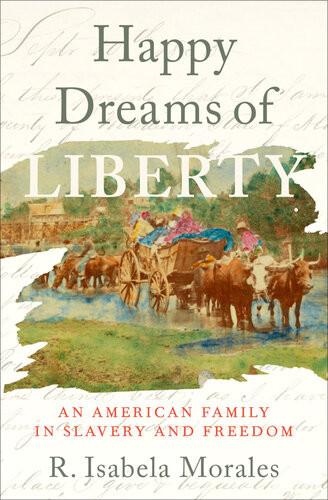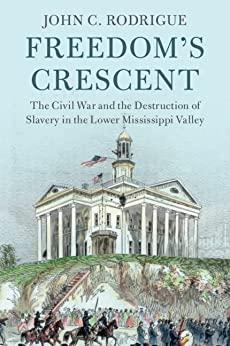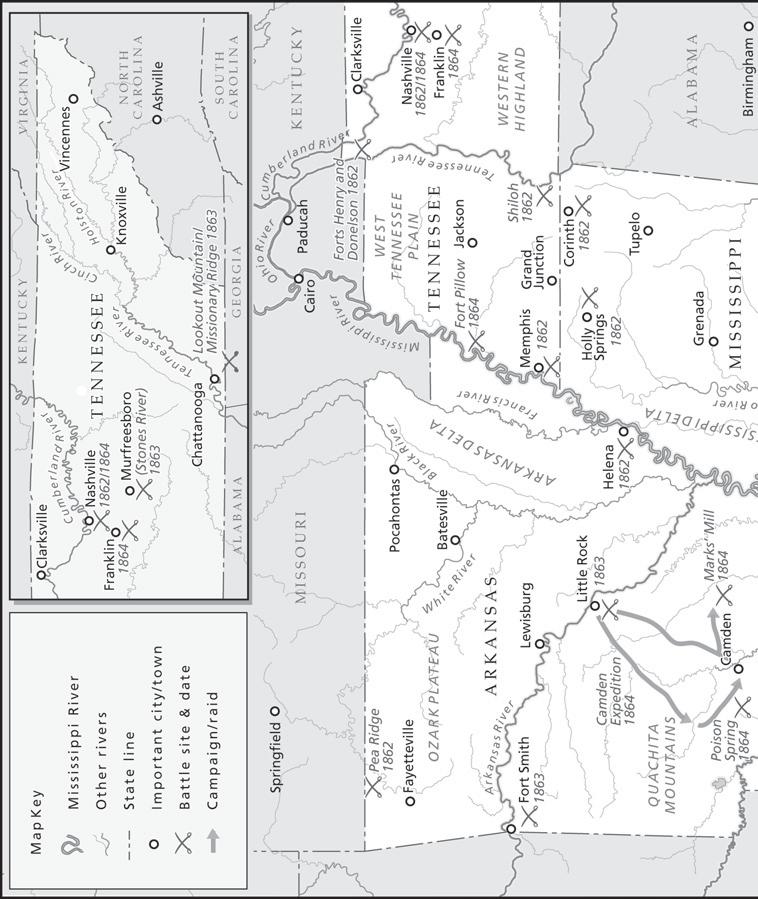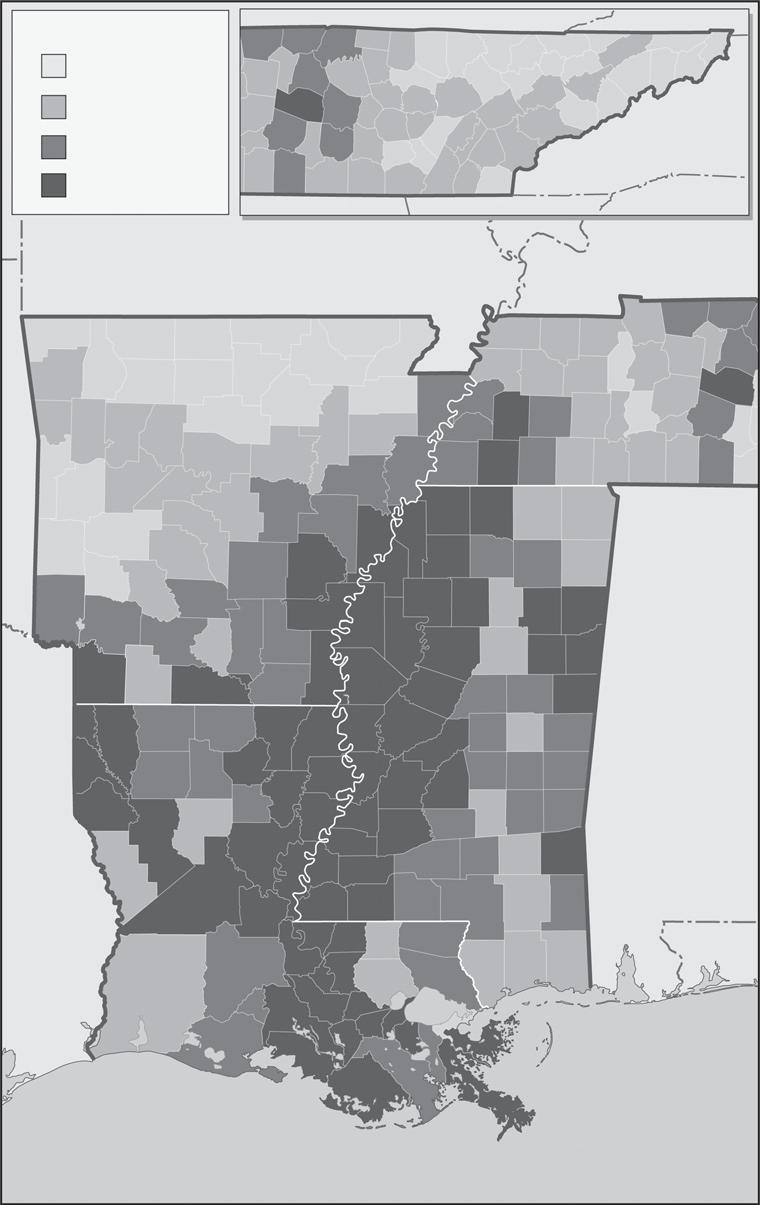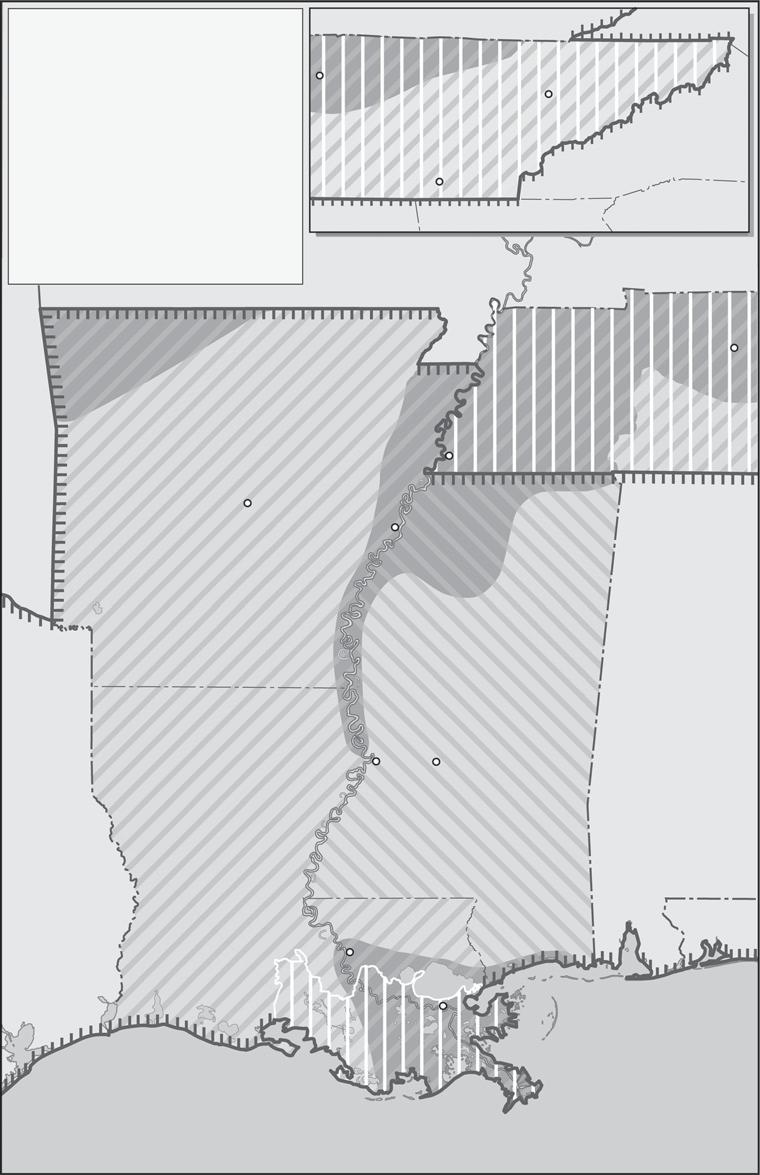FREEDOM ’ SCRESCENT
TheLowerMississippiValleyismorethanjustadistinctgeographical regionoftheUnitedStates;itwascentraltotheoutcomeoftheCivilWar andthedestructionofslaveryintheAmericanSouth.Beginningwith Lincoln’s1860presidentialelectionandconcludingwiththe finalratificationoftheThirteenthAmendmentin1865, Freedom’sCrescent explores thefourstatesofthisregionthatsecededandjoinedtheConfederacy: Tennessee,Mississippi,Arkansas,andLouisiana.Byweavingintoa coherentnarrativethemajormilitarycampaignsthatenvelopedthe region,thedailydisintegrationofslaveryinthecountryside,andpolitical developmentsacrossthefourstatesandinWashingtonDC,JohnC. RodrigueidentifiestheLowerMississippiValleyastheepicenterof emancipationintheSouth.Asweepingexaminationofoneofthewar’ s mostimportanttheaters,thisbookhighlightstheintegralrolethisregion playedintransformingUnitedStateshistory.
JohnC.RodrigueistheLawrenceandTheresaSalamenoProfessorinthe DepartmentofHistoryatStonehillCollege.Hisbook Reconstructioninthe CaneFields receivedtheKemperandLeilaWilliamsPrizefromtheLouisiana HistoricalAssociation.Heisalsoaco-editorofoneofthevolumesof Freedom:ADocumentaryHistoryofEmancipation,1861–1867.In2016–2017,heservedasthePresidentoftheLouisianaHistoricalAssociation.
CAMBRIDGESTUDIESONTHEAMERICAN SOUTH
SeriesEditors:
MarkM.Smith, UniversityofSouthCarolina,Columbia PeterCoclanis, UniversityofNorthCarolinaatChapelHill
EditorEmeritus: DavidMoltke-Hansen
Interdisciplinaryinitsscopeandintent,thisseriesbuildsuponand extendsCambridgeUniversityPress’slongstandingcommitmenttostudiesontheAmericanSouth.Theseriesoffersthebestnewworkonthe South’sdistinctiveinstitutional,social,economic,andculturalhistoryand alsofeaturesworksinanational,comparative,andtransnational perspective.
TitlesintheSeries
JohnC.Rodrigue, Freedom’sCrescent:TheCivilWarandtheDestruction ofSlaveryintheLowerMississippiValley ElijahGaddis, GruesomeLookingObjects:ANewHistoryofLynchingand EverydayThings
DamianAlanPargas, FreedomSeekers:FugitiveSlavesinNorthAmerica, 1800–1860
SebastianN.Page, BlackResettlementandtheAmericanCivilWar HaydenR.Smith, Carolina’sGoldenFields:InlandRiceCultivationinthe SouthCarolinaLowcountry,1670–1860
WilsonJeremiahMoses, ThomasJefferson:AModernPrometheus JoanE.Cashin, WarStuff:TheStruggleforHumanandEnvironmental ResourcesintheAmericanCivilWar
DavidStefanDoddington, ContestingSlaveMasculinityintheAmerican South
LawrenceT.McDonnell, PerformingDisunion:TheComingoftheCivil WarinCharleston,SouthCarolina
EnricoDalLago, CivilWarandAgrarianUnrest:TheConfederateSouth andSouthernItaly
DanielJ.Vivian, ANewPlantationWorld:SportingEstatesintheSouth CarolinaLowCountry,1900–1940
EugeneD.Genovese,ed.DouglasAmbrose, TheSweetnessofLife: SouthernPlantersatHome
DonaldG.Mathews, AttheAltarofLynching:BurningSamHoseinthe AmericanSouth
KeriLeighMerritt, MasterlessMen:PoorWhitesandSlaveryinthe AntebellumSouth
KatherineRyeJewell, DollarsforDixie:BusinessandtheTransformation ofConservatismintheTwentiethCentury
SarahGardner, ReviewingtheSouth:TheLiteraryMarketplaceandthe SouthernRenaissance,1920–1941
WilliamThomasOkie, TheGeorgiaPeach:Culture,Agriculture,and EnvironmentintheAmericanSouth
KarlosK.Hill, BeyondtheRope:TheImpactofLynchingonBlackCulture andMemory
WilliamA.LinkandJamesJ.Broomall,eds., RethinkingAmerican Emancipation:LegaciesofSlaveryandtheQuestforBlackFreedom
JamesVanHornMelton, Religion,Community,andSlaveryonthe ColonialSouthernFrontier
DamianAlanPargas, SlaveryandForcedMigrationintheAntebellum South
CraigFriendandLorriGlover,eds., DeathandtheAmericanSouth
BartonA.Myers, RebelsagainsttheConfederacy:NorthCarolina’ s Unionists
LouisA.FerlegerandJohnD.Metz, CultivatingSuccessintheSouth:Farm HouseholdsinPostbellumGeorgia
LukeE.Harlow, Religion,Race,andtheMakingofConfederateKentucky, 1830–1880
SusannaMicheleLee, ClaimingtheUnion:CitizenshipinthePost–Civil WarSouth
KathleenM.Hilliard, Masters,Slaves,andExchange:Power’sPurchasein theOldSouth
AriHelo, ThomasJefferson’sEthicsandthePoliticsofHumanProgress: TheMoralityofaSlaveholder
ScottP.Marler, TheMerchants’ Capital:NewOrleansandthePolitical EconomyoftheNineteenth-CenturySouth
RasMichaelBrown, African-AtlanticCulturesandtheSouthCarolina Lowcountry
JohannaNicolShields, FreedominaSlaveSociety:Storiesfromthe AntebellumSouth
BrianSteele, ThomasJeffersonandAmericanNationhood
ChristopherMichaelCurtis, Jefferson’sFreeholdersandthePoliticsof OwnershipintheOldDominion
JonathanDanielWells, WomenWritersandJournalistsintheNineteenthCenturySouth
PeterMcCandless, Slavery,Disease,andSufferingintheSouthern Lowcountry
RobertE.Bonner, MasteringAmerica:SouthernSlaveholdersandthe CrisisofAmericanNationhood
FREEDOM ’ SCRESCENT
TheCivilWarandtheDestructionofSlaveryinthe
LowerMississippiValley
JOHNC.RODRIGUE
StonehillCollege
UniversityPrintingHouse,CambridgeCB28BS,UnitedKingdom
OneLibertyPlaza,20thFloor,NewYork,NY10006,USA 477WilliamstownRoad,PortMelbourne,VIC3207,Australia
314–321,3rdFloor,Plot3,SplendorForum,JasolaDistrictCentre, NewDelhi – 110025,India
103PenangRoad,#05–06/07,VisioncrestCommercial,Singapore238467
CambridgeUniversityPressispartoftheUniversityofCambridge.
ItfurtherstheUniversity’smissionbydisseminatingknowledgeinthepursuitof education,learning,andresearchatthehighestinternationallevelsofexcellence.
www.cambridge.org
Informationonthistitle: www.cambridge.org/9781108424097
DOI: 10.1017/9781108539715
©JohnC.Rodrigue2023
Thispublicationisincopyright.Subjecttostatutoryexception andtotheprovisionsofrelevantcollectivelicensingagreements, noreproductionofanypartmaytakeplacewithoutthewritten permissionofCambridgeUniversityPress.
Firstpublished2023
AcataloguerecordforthispublicationisavailablefromtheBritishLibrary.
LibraryofCongressCataloging-in-PublicationData
Names:Rodrigue,JohnC.,author.
Title:Freedom’screscent:theCivilWarandthedestructionofslaveryinthelower MississippiValley/JohnC.Rodrigue,StonehillCollege,Massachusetts. Othertitles:CivilWarandthedestructionofslaveryinthelowerMississippiValley Description:Cambridge,UnitedKingdom;NewYork,NY:CambridgeUniversityPress, 2023.|Series:CambridgestudiesontheAmericanSouth|Includesbibliographical referencesandindex.
Identifiers:LCCN2022034272(print)|LCCN2022034273(ebook)|ISBN9781108424097 (hardback)|ISBN9781108539715(ebook)
Subjects:LCSH:AfricanAmericans – History – 1863–1877.|Freedpersons – UnitedStates –History – 19thcentury.|Slaves – Emancipation – UnitedStates – History – 19thcentury.| Reconstruction(U.S.history,1865–1877) – MississippiRiverValley.|AfricanAmericans –MississippiRiverValley – Socialconditions – 19thcentury.|Slavery – MississippiRiver Valley – History – 19thcentury.|MississippiRiverValley – History – CivilWar,1861–1865. Classification:LCCE185.2R632023(print)|LCCE185.2(ebook)|DDC973.7/14–dc23/ eng/20220823
LCrecordavailableat https://lccn.loc.gov/2022034272 LCebookrecordavailableat https://lccn.loc.gov/2022034273
ISBN978-1-108-42409-7Hardback
ISBN978-1-108-43934-3Paperback
CambridgeUniversityPresshasnoresponsibilityforthepersistenceoraccuracyof URLsforexternalorthird-partyinternetwebsitesreferredtointhispublication anddoesnotguaranteethatanycontentonsuchwebsitesis,orwillremain, accurateorappropriate.
toSylvia
Itmaylooklikeboasting – butwhatItellyouistruth – Ibeganto reflecthowmagnificentathingitwastodieinsuchamanner,and howfoolishitwasinmetothinkofsopaltryaconsiderationasmy ownindividuallife,inviewofsowonderfulamanifestationofGod’ s power.IdobelievethatIblushedwithshamewhenthisideacrossed mymind.AfteralittlewhileIbecamepossessedwiththekeenest curiosityaboutthewhirlitself.Ipositivelyfelta wish toexploreits depths,evenatthesacrificeIwasgoingtomake;andmyprincipal griefwasthatIshouldneverbeabletotellmyoldcompanionson shoreaboutthemysteriesIshouldsee.These,nodoubt,were singularfanciestooccupyaman’smindinsuchextremity – and Ihaveoftenthoughtsince,thattherevolutionsoftheboataround thepoolmighthaverenderedmealittlelight-headed.
EdgarAllanPoe, “ADescentintotheMaelström” (1841)
ListofFigurespage xi
Acknowledgments xii
ListofAbbreviations xvi
Introduction 1
Prologue:Life – andLabor – ontheMississippi 22
parti FromWarforUniontoMilitaryEmancipation, 1860–1862
1 “AnIndependentPower” 43
2OfStampedesandFreePapers 65
3 “BrokenEggsCannotBeMended” 82
4 “TheUnsatisfactoryProspectBeforeThem” 100
partii: FromMilitaryEmancipationtoStateAbolition, 1863
5 “TheReturnoftheSecededStatestoThisUnionasSlave States” 115
6 “RepugnanttotheSpiritoftheAge” 132
7 “TheGreatestQuestionEverPresentedtoPractical Statesmanship” 145
8 “TheNameof ‘Slavery’” 165
9 “RepudiatingtheEmancipationProclamation andReestablishingSlavery” 185
partiii: Abolition:StateandFederal,1864
10 “SlaveryIsIncompatiblewithaRepublicanForm ofGovernment” 223
ACKNOWLEDGMENTS
Giventhatthisbookhasturnedouttobeamuchmoreambitiousundertaking –andhasconsequentlytakenfarlongertocomplete – thanIhadoriginally intended,itisapleasure finallytobeabletothankallofthepersonswhohave helpedtobringittofruition.I firstbegantodeveloptheideaforthisbookwhile workingonmypreviousone, LincolnandReconstruction.Itoccurredtomethen thattherewasalargerstorythanIwasabletotellatthetime.LittledidIknow howmuchlarger,andittookmeawhileto figurethingsout,butIthank everyonewhowasassociatedwiththatbookforthisoneaswell.
AchanceencounterwithDavidMoltke-Hansenatthe2016annualmeeting oftheOrganizationofAmericanHistorians(OAH)inProvidence,Rhode Island, firststeeredmeinthedirectionofCambridgeUniversityPress’ s StudiesontheAmericanSouthseries.Davidhadpreviouslyeditedtheseries withMarkM.Smith,butitnowwasbeingedited,Davidinformedme,byMark andPeterA.Coclanis.IthankDavidforthesuggestion(whichneverwould haveoccurredtome).IcannotexpressmyappreciationenoughtoMarkand Peterforalloftheirsupport,encouragement,andpatienceduringtheselast fewyears,especiallywhenthelengthofthemanuscriptwasbeginningtocause, asMarksoeloquentlyputit, “someheartburn.”
IwouldliketoexpressspecialgratitudetoeveryoneIhavehadtheprivilege ofworkingwithatCambridgeUniversityPress.DeborahGershonowitz first assumedresponsibilityforthisproject,andsheofferedimportantadviceand supportduringmyearlyassociationwiththepress(inadditiontoenablingme togettoself-importantlysaythat “Ihaveameetingwithmyeditorin NewYork”).CeceliaCancellarosubsequentlyinheritedstewardshipofthis project,andIespeciallyappreciateherguidance,support,andsaintlypatience inbringingalongandunwieldymanuscripttocompletion.Ialsothankthe anonymousoutsidereviewersoftheoriginalbookproposaland,later,the manuscriptfortheirchallengingbuthelpfulinsights,questions,and – yes –criticisms,allofwhichmadethebookmuchbetter.Asthingsgotdowntothe wire,VictoriaPhillipshandledmyinnumerablequestionswithaplomb. ThankstothemembersofthePress’soutstandingproductiondepartment –MelissaWardandVidyaAshwinandherteam,especiallycopyeditorVinod Kumar – whomadethisbookatrulyglobalendeavor.
Ihadtheopportunitytopresentpartsofthisworkbeforevariousaudiencesovertheyears,muchtomybene fi t.Ihadthespecialprivilegeof presentinganearlyversionoftheprojectinApril2015before asymposiuminhonorofIraBerlinattheUniversityofMaryland,College Park.ThereactionfromtheaudiencesuggestedtomethatImightinfactbe ontosomething,butIamespeciallygratefulforthecommentsandresponses fromStevenF.Miller(myformercolleagueontheFreedmenandSouthern SocietyProject[FSSP]),LawrenceN.Powell,ThavoliaGlymph,Steven Hahn,andIrahimself.Thatgathering,forvariousreasons,trulywas ahighlightofmycareer.IhadtheopportunitytopresenttheTennessee dimensionofthisstoryataconferenceattheUniversityofMemphisin May2016markingthesesquicentennialofthe1866Memphismassacre. IwouldliketothankSusanE.O’ Donovan(anotherformerFSSPcolleague whowaspresentattheIraevent)forrefusingtotakenoforananswerwhen sheinvitedmetoparticipateintheconference.IalsothankSusanand BeverlyGreeneBondforputtingtogetherabrilliantlyconceptualizedprogram,andtheotherparticipantsandaudiencemembersfortheirquestions, suggestions,andpositivevibes.
Igaveamuch-abbreviatedversionoftheLouisianastoryinmypresidential addressbeforethe2017annualmeetingoftheLouisianaHistoricalAssociation (LHA)inShreveport.Igreatlyappreciatetheresponsetomyaddressfrom LHAfriendsandassociatesfartoonumeroustonamehere,butIwould especiallyliketothankmydearfriendsChuckShindoandMichaelFontenot fortraipsingallthewayupfromBatonRougetohearmyaddress,andFaye Phillipsforallofhersupportthroughoutmyacademiccareer,datingbackto whenwe firstmetinthespringof1988attheLouisianaStateUniversityspecial collections,asIwasjustcommencingmydissertationresearch.
LouisFerleger,anotherdearfriendofmorethanthirtyyearsandoneofmy mostearnestadvocates,mademetheproverbialofferIcouldn’trefuseby insistingthatIpresentbeforetheAmericanPoliticalHistoryInstituteof BostonUniversity’sHistoryDepartment.IthankLouandBruceJ.Shulman, whoadministerstheInstitute,fortheinvitationtospeakinSeptember2018. IalsogreatlyappreciatethechallengingquestionsandwordsofencouragementthatIreceivedfromNinaSilber,SarahT.Phillips,andtheother contributorstoourcollegialdiscussion.
Ihadthegreathonor,alongwithEdwardAyers,ofparticipatinginthe DistinguishedScholarsSeriesatNichollsStateUniversityinThibodaux, Louisiana,inMarch2019.IgreatlyappreciatetheinvitationfromDavid D.Plater,authorofa finebookontheButlerfamilyofsouthLouisiana,to givethetalk.IaskedDavidwhatheneededmeforifhealreadyhadEdAyers linedup,butheinsisted,andforthatIthankhim.Iwouldalsoliketothank PaulWilson,ChairoftheDepartmentofHistoryandGeography;JayClune, PresidentofNichollsState;TomBecnel,retiredfacultymemberintheNicholls
historydepartment;andtheentireNichollsState/Thibodauxcommunityfor theirgracioushospitality.ItisalwaysnicetogobacktoLouisiana.
IpresentedanearlyversionofthisprojectataDean’sForumatStonehill College.Iwouldliketothankthefriends,colleagues,andstudentswho attendedthepresentationandwhoaskedprobingandchallengingquestions andofferedhelpfuladviceandsuggestions.IalsothankthoseofmyStonehill colleagueswhoofferedencouragementandsupportduringsometryingtimes. Moreover,twoseparatesabbaticalleaves(yetanotherindicationofhowlong thisprojecttook)alsoprovidedmewiththetime,inbothinstancesatcritical junctures,toundertakesignificantbutessentialrevisionsofthemanuscript.
IthankthestaffsofthevariousarchivesIhavevisitedovertheyearsfortheir assistanceandoftherepositoriesfromwhichIsecuredillustrationsforreproducingthemandforpermissiontousethem.TheStonehillCollegelibrary’ s interlibraryloanstafflikewiseprovidedinvaluableaidintrackingdown materials.TomWillcocksoncreatedtheexcellentmaps.
IunabashedlyabusedthefriendshipofPaulA.Cimbala(fellowEmorygrad andNewJerseyguitarist),MichaelW.Fitzgerald,theaforementionedLou Ferleger,andJosephP.Reidyintakingthemupontheirgraciousofferstoread aramshacklemanuscript.I’dliketothinkourfriendshipshavesurvived,but Ioweeachofthematremendousdebtofgratitudeforofferingadviceand suggestionsthatgreatlyimprovedwhatIwastryingtosay.Theyreallydid makethebookbetter,andtherewassimplynogettingaroundthefactthat Ihadtohavesympatheticbutdiscerningreaderslookatit.Ihopetobeableto repaythedebt.StevenHahnalsoreadpartsofthemanuscriptandprovided sagaciousadvice,inadditiontohisgeneralsupportandencouragement. RichardFrank(myuncle-in-law)graciouslyreadtheentiremanuscript – the longversion – andmadeanumberofgoodcatches.
IthankMichaelVorenbergforhisassistanceonacoupleofspecificmatters thatmadeabigdifference.Hemaynotrememberit,butJamesOakesoffered areassuringendorsementwhenthisbookwasbarelyatwo-paragraph proposal.
FriendswithwhomIhavediscussedthisprojectovertheyearsalsooffered advice,suggestions,andencouragement,orjusthelpedtokeepmesane.They includeMikeRoss(whoseinsistencethatIincludeAlabama,since “people writesongsaboutAlabama,” Iultimatelyhadtotakeapasson);ScottMarler (whoseexcellentbookonNewOrleanshelpedmegreatly);AndrewSlap;Mark Schantz;PaulCimbala(again)andElizabethVozzola;RexPalmerandClaudia Rizzini;andGloriaandKenNykiel.JimRoark,mydissertationadviserfrom backinthedayandlongtimefriend,alsoreadpartsofthemanuscriptandwas willingtotalkendlessly – onthoseall-too-rareoccasionsweareabletoget togetheranymore,andonthephone – abouttheproject.Inanentirely differentrealmofmyexistence,JimThorpe,DaveBetten,DonDistaso, WayneJarger,TomTozzi,andTonyChibaro,asalways,keptitreal.
MyfriendJohnMerrimanhasservedasanunindictedco-conspiratoron thisproject.Inthenearlyfortyyearssincewe firstmetatEmoryUniversityin preparingforthefall1986semester,Johnhasbeenadearandtruefriend, acomrade,andanintellectualpartner.Eventhoughhenowliveshalfaworld away,ourregularphoneconversationshavehelpedtoshapemythinkingon thisbookandonmanyotherthings.Andonceagain,Johngenerouslygaveof histimeandworkedhismagiconthefootnotesandbibliography.Whenit comestohistoriographicalorbibliographicmatters,hecanvirtuallyreadmy mind.Anyerrorsin “thenotesandbib” areonme,butsuchvirtuesastheymay haveareowingtoJohn’sselflessefforts.
IwouldagainliketoexpressmydeepestappreciationtothelateLawrence SalamenoandtoTheresaSalamenoforcreatingtheprofessorshipthatIhave beenprivilegedtoholdandfortheirsupportofStonehillCollege.Despite Larry’spassing,Ialwayshadhiminmindasmyidealreaderandintended audience:someonewhoheldanabidingpassionforhistoryandunderstoodits importance,andwho,thoughnotanacademic,couldappreciatethe finer pointsofserious,scholarlydebate.IdomissLarryandourconversations abouthistory,theYankees,thecats,andothermatters.
Severalotherfriendsandfamilymembershavesadlypassedawayinthe yearsIwasworkingonthisbook,twoofwhomImustmention.Myfather, JohnRodrigue,wasdiagnosedwithcancerinearly2017,justasIwaspreparing togivemyLHApresidentialaddress,andhepassedayearlater.Adearfriend frommyLouisianadays,RexStem,wastakenmuchtoosoon.AnApril2013 triptonorthernCaliforniawithmywifeSylvia – fortheOAHmeetinginSan Francisco,todoacoupleofdaysofresearchatStanford,andtovisitwithRex, Melissa,andtheirchildrenHenryandNathalieinDavis – remainsatreasured memory.Imisstheseandallofthelovedoneswhohavepassedinrecentyears.
Iwouldliketoexpressmydeepestappreciationtomyfamilymembers, includingmymotherMaureen,mysistersAnn-MarieandTerry,myvarious in-laws,andmyniecesandnephewsKelly,Glen,Jackie,Eddie,Abigail,and Emily,foralloftheirloveandsupport.ThankstootoGranite,Zydeco, Mr.Friendly,Minnie,Maxx,andShadowforgreatlyenrichingSylvia’sand mylives(andtoMr.FriendlyandMaxxinparticularfortheirthoughtful emendationswhilestrollingacrossthecomputerkeyboard).
ThededicationofthisbookacknowledgesabondthatIdeeplytreasure.
ABBREVIATIONS
FullcitationsforpublishedmaterialareprovidedintheBibliography
ALPThePapersofAbrahamLincoln,LibraryofCongress
CGCongressionalGlobe
CWLTheCollectedWorksofAbrahamLincoln (Basler) Freedom:BMEFreedom:ADocumentaryHistoryofEmancipation.Series2: TheBlackMilitaryExperience Freedom:DSFreedom:ADocumentaryHistoryofEmancipation.Series1. Volume1:TheDestructionofSlavery Freedom:L&L-1865Freedom:ADocumentaryHistoryofEmancipation.Series3. Volume1:LandandLabor,1865 Freedom:WGFL-LSFreedom:ADocumentaryHistoryofEmancipation.Series1. Volume3:TheWartimeGenesisofFreeLabor:TheLower South
LSUTheLouisianaandLowerMississippiValleyCollections,Hill MemorialLibrary,LouisianaStateUniversity
OROfficialRecordsoftheWaroftheRebellion
PAJThePapersofAndrewJohnson
UNCTheSouthernHistoricalCollection,WilsonLibrary, UniversityofNorthCarolinaatChapelHill
Figure1
Figure1 (Cont.)
Figure2 Thepercentageofslavesinthetotalpopulation,bycounty(orparish),1860
ALABAMA
FLORIDA
MISSISSIPPI
LOUISIANA
Extent of Union military control just prior to the issuing of the Emancipation Proclamation.
Areas that were included within the Emancipation Proclamation.
Areas that were excluded from the Emancipation Proclamation.
States that abolished slavery by state means during the war (with date).
State that abolished slavery under Federal dictate after the war (with date).
ARKANSAS (March 1864)
LOUISIANA (September 1864)
MISSISSIPPI (August 1865)
TENNESSEE (February 1865)
Cartography by Mapcraft.com
Figure3 EmancipationandabolitioninthelowerMississippivalley. Note: TheThirteenth Amendment,whichbecameoperativeinDecember1865,prohibitedslaveryinallofthe statesandinallterritoryunderFederaljurisdiction.
Introduction
Thelegacyofslaverycontinuestohauntthenationalconscience,andquestionssurroundingraceremainamongthenation’ smostintractablechallenges.Despite – orindeedbecauseof – thedramatictransformationsthat Americansocietyhasundergoneinrecentdecades,alongwithconcomitant changesinthehistoricalprofessionandhistoricalscholarship,anyattemptto understandthenation ’ spast,orpresent,revolvesmorethaneveraroundthe studyofslaveryanditsdestruction,an dscholarlyinterestinthesetopics showsnosignsofabating.Slavery,itiswellunderstood,wasnottangential to – orsomehowanaberrationof – theAmericanexperience.Itwascentral, anditsoverthrowprecipitatedafundamentalreorderingofeveryaspectof USsociety.Nothingwasimmunetoslavery’ s – oremancipation’ s – consequences.Paradoxically,whilenotionsofrace,asthehistoricalrecordhas amplydemonstrated,are “ constructs” thatevolveovertime,racismand racialistthinkingalsoappeartobeimmutableelementsofmodernsociety. Tothisday,Americanscontinuetograpplewithslavery ’ sbitterlegacy.They probablyalwayswill.
Aspartoftheefforttounderstandthatlegacy,thisbookexaminesthe destructionofslaveryinthelowerMississippivalley – thevastgeological basindrainedbytheMississippiRiveranditsmaintributariesanddistributariessouthoftheconfluencewiththeOhioRiver – duringandimmediately followingtheUSCivilWar.BeginningwithAbrahamLincoln’selection aspresidentinNovember1860andendingwith finalratificationofthe ThirteenthAmendmentinDecember1865,itfocusesonthefourstatesof theregionthatsecededfromtheUnionandjoinedtheConfederateStatesof America – Arkansas,Louisiana,Mississippi,andTennessee.Inparticular,this studyplacesspecialemphasisonthepartsofthosestateswhereslaveryand plantationagriculturepredominated,includingwestandcentralTennessee, thesoutheasterlyhalfofArkansas,andthewesternhalfofMississippi,aswell asalmostallofLouisiana.Ofthesestates,onlyMississippididnotabolish slaveryduringthewarorexperiencewartimeReconstruction.Thelower Mississippivalleyencapsulatedthedestructionofslaveryintherebelliousstates asawhole,somethingthatcanbesaidofnootherpartoftheConfederacy.
EventakingintoaccountD.W.Meinig’sobservationthat “[m]ostgeographicregionsareabstractionsandapproximations,” thisbookconsidersthe lowerMississippivalleyasadistinctgeopoliticalentity.1 Fromthisvantage point,itintegratesintoacoherentnarrativethemilitaryexperience,political developmentsinthefourstatesandWashington,DC,andtheunderminingof slavery “fromthebottomup” inexaminingwhatwasundoubtedlythegreatest socialrevolutioninUShistory.ThelowerMississippivalleyboastsof auniverseofscholarshiponvariousaspectsoftheCivilWarandthedestructionofslavery,andscholarshavelongunderstoodthecentralityoftheregion tothewar’soutcomeandtoslavery’sdownfall.Consideringhowmuchhas beenwrittenonthelowerMississippivalleyduringthewar,itseemsremarkablethatnosinglebookexaminestheendingofslaveryinthisdistinctand vitallyimportantregion.Thisbookattemptsto fillthatgap.2
Whileframedasachronologicalnarrative,thisbookputsforwardtwo overarchingthemes.First,itarguesthatthemultidimensionalnatureof emancipationandabolitioninthelowerMississippivalleyelucidatesthe variousmeansbywhichslaverywasbroughttoanendintheUnitedStates. Second,itcontendsthatthedestructionofslaveryintheUnitedStateswas evenmorecontingentthanpreviousscholarshiphasallowedfor,andthatthe exigenciesofwar,emancipation,andwartimeReconstructioninthestatesof thelowerMississippivalleyprovedintegraltothisprocess.The firsttheme pullstogetherthemyriadstrandsofastorywithwhichscholarsofemancipationarefamiliar,whilethesecondoffersarevisionofwhatmightbe consideredthestandardaccountofthedestructionofslaveryintheUnited States.
1 Meinig, TheShapingofAmerica,xvii.AlthoughAmericansduringthenineteenthcentury employedthetermMississippivalleyimprecisely,theyhadageneralawarenessofthearea asadistinctgeographicalregion.
2 OnecrucialexceptionisArmsteadL.Robinson’s1977dissertation, “DayofJubilo.” The storyofthisworkislegendaryinthescholarshiponemancipation.Thebookthatwas eventuallypublishedposthumously(in2005)wasverydifferentfromRobinson’sdissertation,thoughthelowerMississippivalley figuresprominentlyinbothworks.Robinson’ s BitterFruitsofBondage takesamuchmoreexpansiveviewoftheMississippivalleythan doesmine,incorporatingalmosttheentireareafromtheAppalachianMountainsto Texas.Italsofocusesmostofitsattentiononthe firsttwoyearsofthewar,untilthe Confederacy’s1863militarylossesatVicksburgandChattanooga.Whiletheendingof slaveryisobviouslycriticaltoRobinson’sanalysis,heexaminesthe(lower)Mississippi valleyasameansofdemonstratingthatclassconflictamongwhiteSouthernersover slaverywastheprimarycauseofConfederatedefeat.Aswillbeseen,myexaminationof thelowerMississippivalleyseekstoexplainhowtheformalabolitionofslaverycame about.Ironically,Robinson’sdissertationprobablyhadamoreprofoundimpactonthe scholarshiponslavery,emancipation,andtheCivilWarthandidthebookwhenit finally appeared.Nonetheless,allofthisscholarshipsincethelate1970sowesatremendousdebt ofgratitudetoRobinson’strulypathbreakingdissertation.
The firstthememaintainsthatthelowerMississippivalleyexperiencedallof the fivemajordimensionsofwartimeemancipationandabolition.First,partsof allfourstateswitnessedtheliberatingofslavesbyUnionmilitaryforces – or limitedmilitaryemancipation – undervariousFederaledictspriortoLincoln’ s issuingoftheEmancipationProclamationonJanuary1,1863.Althoughcircumscribedintheory,suchemancipationwaswidespreadinpractice.Second, thefreeingofallslavesindesignatedgeographicalareas – or universalmilitary emancipation – undertheEmancipationProclamationtookplacethroughout allofArkansasandMississippiandmostofLouisiana,includingpartsofall threestatesthatUnionmilitaryforcescontrolledwhentheproclamationwas issued.Third,theregionexperienced exclusions fromtheproclamation,includingsouthernLouisianaandallofTennessee,asaconcessiontosouthern Unionistsinthosestateswhowereattemptingtoorganizeloyalgovernments. Fourth, state-levelabolition,aspartofwartimeReconstruction,occurredin ArkansasandLouisianain1864andinTennesseeinearly1865.Theseactions providedconstitutionalsanctiontothefreedomformerslaveshadgained viamilitaryemancipation,andtheyabolishedslaveryasaninstitution,somethingtheEmancipationProclamationcouldnotdo.Finally, Federalcivil authoritydefinitivelyendedslavery.Mississippiessentiallyabolishedslavery underFederaldictateafterthewar,whiletheThirteenthAmendmentprohibitedanystatetoreintroduceslavery.OtherConfederateareasexperiencedone ormoreofthesedimensionsofemancipation,butnoneexperiencedallofthem. Itwouldnotbeanoverstatementtosaythatthedestructionofslaveryinthe SouthasawholecanbeunderstoodbylookingatthelowerMississippivalley.3
Thesecondtheme,whichrequiresgreaterelaborationthanthe first,seeksto revisetheconventionalnarrativethatexplainshowtheCivilWarwastransformed,formostNortherners,fromawartopreservetheUnionintooneboth topreservetheUnionandtoendslavery.Italsocallsforadeeperappreciationof thedifficultiesthatwereinvolvedintranslatingmilitaryemancipation – orthe freeingofslavesasa consequence ofsuppressingtherebellion – intothepolitical
3 PossibleexceptionstothisgeneralizationincludetheVirginia–WestVirginiasituation andKentucky.AlthoughVirginiaestablishedaUnionistgovernmentthatabolished slaveryandwasinstrumentalincreatingthestateofWestVirginia,wartime ReconstructioninthatstatewasoffarlesssignificancethaninthelowerMississippivalley. BecauseKentucky(whichwasexcludedfromtheEmancipationProclamation)didnot abolishslaveryduringthewar,andwasnotrequiredtoabolishslaveryasaconditionfor restorationtotheUnion(sinceitdidnotsecede),slaveryonlyendedinthestatewith final ratificationoftheThirteenthAmendmentinDecember1865.Duringthewar,Kentucky experiencedothermodesofFederalemancipationparticulartoitscircumstances:in April1864,theWarDepartmentapprovedanorderallowingfortherecruitmentof maleslavesinKentucky(therebyemancipatingthem)withtheirowners’ permission;in March1865,Congressapprovedaresolutionfreeingthewivesandchildrenofblack soldiersandfuturerecruits,apolicythatwasenforcedwidelyinKentucky.Thesemeasures stilldidnotabolishslaveryinthestate. Freedom:BME,193,196–97.
objectiveofabolishingslaveryasaninstitution(whichalsoincludesstatemeans, notjusttheThirteenthAmendment).Thesedifficulties,thisbookfurther suggests,wererootedintheshortcomingsofabolitionistthoughtandthe antislaverymovementingeneral.HistoriansoftheCivilWarandemancipation havetraditionallyimmersedthemselvesinthe “war-for-Uniontowar-forfreedom” narrative.Yettheyhavegenerallydemonstratedlessawarenessof theproblem – whichbecameacentraloneforantislaveryadvocatesduring thewar – oftransformingmilitaryemancipationintoconstitutionalabolition. Whereasdevelopmentsthroughouttheslavestatescontributedtotheadventof universalmilitaryemancipation,thelowerMississippivalleywasattheepicenter ofthetransformationofmilitaryemancipationintoconstitutionalabolition.
The “standard” accountofhowtheCivilWarbecameawartoendslavery focusesoverwhelminglyontheprocessbywhichLincolncametoissuethe EmancipationProclamation.Historianshavetraditionallyviewedtheproclamation,quitecorrectly,asoneofthetrulytransformativemomentsinUS history.Itisalmostimpossibletooverstatetheproclamation’ssignificanceto theoutcomeofthewarandtoAmericans’ historicalconsciousness.Yetmany historiansequate emancipation with abolition,ortheypresupposethatthe formerinevitablyledtothelatter.4 DespiteexcellentworkontheThirteenth
4 Thescholarshiponthedestructionofslaveryissovastthatitwouldbeimpossibletocitethe manyworksthatdemonstratethisemphasisontheEmancipationProclamationoverconstitutionalabolition.Whiletherearesomeexceptions,theequatingofmilitaryemancipation withabolition,ortheassumptionthatabolitioninevitablyfollowedtheproclamation,pervadestheliterature.ThesameistrueofthescholarshiponLincoln,whichalmostbydefinition highlightstheproclamation.Standardaccountsoftheendingofslaveryinthewestern hemisphere,whichareessentialtoanyunderstandingofthedestructionofslaveryinthe UnitedStates,includeBlackburn, AmericanCrucible;Davis, ProblemofSlaveryintheAgeof Emancipation;andDrescher, Abolition.OlderworksontheproclamationoronFederal wartimeantislaverypolicythatemphasizeemancipationincludeFranklin, Emancipation Proclamation,andGerteis, FromContrabandtoFreedman.Themorerecent,generally excellent,scholarshiponemancipationorabolitionintheUnitedStatesalsodisplaysthis tendencytoaccentuatetheproclamation,andmilitaryemancipationgenerally,overconstitutionalabolition.Worksthatsituatethelong-termprojectofendingslaveryintheUnited StatesinhemisphericperspectiveincludeBerlin, LongEmancipation;Hahn, PoliticalWorlds ofSlaveryandFreedom;Rael, Eighty-EightYears,esp. chap.7;andSinha, TheSlave’sCause. Recentworksonwartimeemancipationandthedestructionofslavery,oronLincolnand emancipation,thatdevotemostoftheirattentiontotheproclamationincludeBlairand Younger, Lincoln’sProclamation;BlairandBroomall, RethinkingAmericanEmancipation; FinkelmanandKennon, Lincoln,Congress,andEmancipation;Foner, FieryTrial;Guelzo, Lincoln’sEmancipationProclamation;HolzerandGabbard, LincolnandFreedom;Holzer, Medford,andWilliams, EmancipationProclamation;Masur, Lincoln’sHundredDays; Medford, LincolnandEmancipation;Medford, “DayofJubilee”;Oakes, FreedomNational; andWilliams, “UnderCoverofLiberty.” InoneoftheessaysinHolzerandGabbard, Lincoln andFreedom,HermanBelzperhapscomesclosesttopinpointingthedifficultyoftransformingmilitaryemancipationintoconstitutionalabolition.However,eveninthisessay,Belz tendstoequateemancipationwithabolition,andhetakestheideaofabolishingslaveryby
AmendmentbyMichaelVorenberg,LeonardL.Richards,andRebecca E.Zietlow,historiansofemancipationtendtorelegatetheformalabolition ofslaveryalmosttoanafterthought.5 Theymaydisagreeon how theshiftto
amendingtheFederalConstitutionalmostasagiven.(Belz, “Constitution,theAmendment Process,andtheAbolitionofSlavery.”)ThelegalhistorianGeraldT.Dunnegoessofarasto suggestthattheThirteenthAmendmentwas “largelyunnecessary,” owingtothe EmancipationProclamationand “stateactionatthegrassroots” (Dunne, “Reconstruction Amendments,” 179).Asarguablythemostauthoritativerecentaccountofthewartime destructionofslavery,Oakes’ s FreedomNational deservesspecialcommentary.Oakesdevotes approximately80percentofhisnearly500pagesoftexttotheyearandahalfleadinguptothe proclamationandtoitsimplementation,and20percenttothealmostthreeyearsthatwere subsequentlyneededtoabolishslavery.Oakesincludestwoincisivechaptersthattracethe challengesofabolishingslaveryaftertheproclamationhadbeenissued,butbyfarhisfocusis ontheproclamationastheculminationofUnionmilitaryemancipationpolicythatbegan,he posits,attheverystartofthewar.AlthoughIdisagreewithOakes’scontentionthat Republicans,includingLincoln,weregenerallycommittedtoawaragainstslaveryright fromthestart,myintellectualdebttohisextraordinaryworkwillbeobvious.In TheSecond Founding,EricFonermakesthedistinctionbetweenmilitaryemancipationandconstitutional abolition,thoughmostlytoshowwhyanabolitionamendmenttotheFederalConstitution wasnecessary.Foneralsonotes,however,thattheEmancipationProclamation “didnotmean theendofLincoln’squestforstate-by-stateabolition,” bothasameansofwinningthewarand abolishingslaveryinthesecededstates(23–28;quotation,27).AcentralthemeofChandra Manning’ s TroubledRefuge isthecontingentnatureofwartimeemancipationandthe possibilityofslaverysurvivingthewar.Therehavebeenmanyinstancesthroughouthistory, Manningnotes,inwhichslaverywascriticallyweakenedduringwaronlytosurviveand becomeevenstronger.Ironically,Manningmaytakethisargumentabit too farinmaintainingthatitwasnottheThirteenthbutthe Fourteenth Amendmentthat finallyguaranteedthe demiseofUSslavery,since,assheobserves, “itisfarmoredifficulttoenslaveacitizenthan anoncitizen.” Shecontinues: “theFourteenthAmendmenthelpedtoensurethepermanence ofemancipationintheUnitedStates,incontrasttomostinstancesofwartimeemancipation throughoutworldhistory,whichmoreoftenresultedinreenslavementortheperpetuationof slavery” (282).Forrecentoverviewsonthescholarshiponemancipationandabolition,see Brooks, “ReconsideringPoliticsintheStudyofAmericanAbolitionists”;Emberton, “UnwritingtheFreedomNarrative”;andKolchin, “ReexaminingSouthernEmancipation.” Kolchincorrectlynotesthedifficultyofpinningdowntheprecise “momentofemancipation,” buthethenjumpsaheadfromtheproclamationtotheThirteenthAmendment.Although Kolchinallowsfor “self-emancipation” andslave flightthroughoutthewar,abolitionseemsto followemancipationalmostinevitably. “IftheEmancipationProclamationindicatedan intenttomovetowardemancipation,” hewrites, “theThirteenthAmendmentappeared almostanafterthoughtbythetimeitwasratified,endorsingwhathadalreadyoccurredin fact” (9–10).Whiletherearecertainlyexceptions,thescholarshiponthedestructionofslavery focusesoverwhelminglyontheEmancipationProclamation,assumesslaverywasdoomed followingUnionmilitaryvictory,andtreatstheabolitionofslaveryasavirtualformality.If slaverywereindeeddeadbythetimetheThirteenthAmendmentwas finallyratified,itwas onlybecauseofthe fiercestruggleoveritsfate – driven,asthisbookwillshow,bythefearthat itmightverywellsurviveUnionmilitaryvictory – inthenearlythreeyearsbetweenJanuary1, 1863,andDecember1865.
5 Vorenberg, FinalFreedom;Richards, WhoFreedtheSlaves?;andZietlow, Forgotten Emancipator.IncontrasttoOakes,Vorenbergfocusesoverwhelminglyontheamendment
awarforfreedomcameabout(witnesstheendlessdebateover “whofreedthe slaves?”),buttheygenerallyconcurthatsuchashifttookplace.Tobesure, someofthemchallengethisnarrative.GaryGallagher,forinstance,claims thatthewaralwaysremainedawarprimarilyforUnionformostNortherners, whileJamesOakes’smonumental FreedomNational contendsthatRepublicans beganactingagainstslaveryalmostimmediately.6 Nonetheless,historians largelyadheretothis “war-for-Uniontowar-for-freedom” trajectory,evenif theydifferontheimpulsesbehindit.Placingfarmoreemphasisontheproclamationthanonlaterdevelopments,theyalmostassumethatonceLincoln issuedit,pendingUnionmilitaryvictory,slaverywasdoomed.7
followingitsDecember1863introductionintoCongress,devotingapproximately20percent ofits250pagesoftexttotheamendment’santebellumandwartimebackground.This observationisofferedasabasisforcomparison,notascriticism.Vorenbergprovides anumberofkeyinsightsthatIhaveusedandexpandeduponinmyanalysis.Mydebtto hisworkwillalsobeobvious.AlthoughRichardstakesgreateraccountoftheamendment’ s backgroundthandoesVorenberg,RichardsseemstoassumethepreexistingideaofaFederal abolitionamendment,something,asVorenbergshows,veryfewAmericanssubscribedto beforetheCivilWar.Zietlow’sstudyofOhioUSRepresentativeandRadicalRepublican JamesM.Ashley,whoshepherdedtheThirteenthAmendmentthroughtheHouse,provides anexampleofoneoftherareRepublicansorantislaveryadvocateswhocalledforsuchan amendmentbeforethewar.SeealsoSamito, LincolnandtheThirteenthAmendment.
6 Gallagher, UnionWar
7 MentionmustalsobemadeofthegroundbreakingworkoftheFreedmenandSouthern SocietyProject,whichhasproducedthemulti-volume,documentaryeditingseries, Freedom:ADocumentaryHistoryofEmancipation,1861–1867,alongwiththesimilar scholarship,bothbeforeandafterit,thatcastemancipationasasocialrevolution.While theseworkshardlyignoredofficialpolicy,laws,andthelike,theyweremoreconcerned withemancipationasasocialandhistorical process,oneinwhichtheslavesthemselves playedacentralrole,thanwithpolicy.ThestartingpointforthisviewisDuBois, Black Reconstruction,butseealsoAptheker, NegrointheCivilWar.Importanttitlesofthepost–WorldWarIIperiodincludeLitwack, BeenintheStormSoLong;McPherson, Negro’sCivil War;Quarles, NegrointheCivilWar;andRose, RehearsalforReconstruction.Noattempt ismadeheretocitethevastbodyoflocalorcommunitystudiesontheendingofslavery thatthispreviousscholarshiphasinspired,butimportantworksalongtheselinesforthe South(andthenation)asawholeincludeFoner, Reconstruction;Hahn, NationUnderOur Feet;andReidy, IllusionsofEmancipation.Reidyhasfurtherquestionedapproachesto emancipationthatareframedaroundthe “linear” evolutionofpolicy.Thisviewpoint fits withinhislargerargumentthatindividualsexperiencedbothtimeandplaceinessentially malleableandradicallydifferentwaysamidsttheupheavalandstrifeofwar. “AsIargue throughoutthisbook,” Reidywrites(371,n.38), “understandingemancipationasalinear successionofofficialactionsobscuresmorethanitilluminates.” WhileIdonotdisagree withReidy’skeyinsightthatindividualsexperiencedtimedifferentlyunderdifferent circumstances,theaccountpresentedhere,admittedly,is firmlyrootedinthe “linear” evolutionofpolicy.Theclassicaccountoftheslaveholders’ responsetoemancipationfor theSouthasawholeisRoark, MasterswithoutSlaves.Finally,inthevastliteratureonthe Confederacy,importantrecentworksthatattributeitsfailuretothecrisisoverslavery includeLevine, FalloftheHouseofDixie;McCurry, ConfederateReckoning;andRobinson, BitterFruitsofBondage.
Yetthis fixationontheEmancipationProclamationhasledtohistorical misunderstanding.Althoughscholarshavelongrecognizedthemanylimitationsoftheproclamation,theyhavenotfullyappreciateditsmostimportant shortcomingortheimplicationsthereof.Evenallowingforitsunquestioned legalityandfullimplementation,theproclamationdidnot – could not –abolishslaveryasaninstitution.Itwasamilitarydirectivethatfreedcertain slaves.Amongthemanyquestionsitleftunanswered,itsaidnothingabout howslaverywouldfactorintotherebelliousstates’ returntotheUnion.Itwas alsoentirelysilentonthefutureofslavery.Theproclamationcouldhavefreed everysingleslaveinthesecededstatesandyetstillhaveleftslaverylegallyin place.Becauseoftheproclamation’sinabilitytoendslaveryasaninstitution, thereremainedthepossibilityofthesecededstatesbeingrestoredtotheUnion withouthavingtoabolishit,andofslaverythereforesurvivingthewar.Ifsuch apossibilityseemsremoteinhindsight,itwasnotsotomanycontemporaries, bothforandagainstabolition.(Asoftennoted,thevastmajorityofthe Confederacy’s3.5millionslaveswerestillenslavedwhenthewarended.) Assumingslavery’sdestructiontobeinevitableaftertheproclamation,and uponUnionvictory,historianshaveoverlookedthesignificanceoftheshiftto constitutionalabolition – andthushavemissedanimportantpartofthestory. Ashistorianshavewellunderstood,Republicanswerecommittedtothe eradicationofslaveryafterJanuary1,1863,andmanybeforethen.Yetitwas notatallclearhow – orwhether – Lincoln’semancipationpolicywouldbe turnedintoabolition.Thissituation,inmanyrespects,wasalogicaloutgrowth oftheprewarantislaverymovement.Foralloftheabolitionists’ successbefore thewarinshapingnorthernpublicopinionontheenormityofslavery,they hadneverreallydevelopedanyconcrete,coherentplanforhowtoendit. NeitherhadtheadvocatesofanantislaveryConstitution – orwhathistorians call “antislaveryconstitutionalism”– mademuchheadwayindevisinga strategytoeliminateslaveryinthestatesunderpeacetimeconditions.The principleof “freedomnational”– theideathatslavery,asastrictlylocalorstate institution,enjoyednolegalexistencewhereverFederalauthorityprevailed –hadgainedwidespreadsupportbeforethewar.Yeteventhisideaofferedno waytoendslavery.Indeed,theso-calledFederalconsensus – whichmaywell havebeenthemostsacrosanctconstitutionalprinciplebeforetheCivilWar, andtowhichevenmostabolitionistssubscribed – heldthatbecauseslavery wasastatematter,theFederalgovernmentpossessednoauthoritytoact againstitinthestates.Onlya state couldabolishslavery.Lincolnhimself sworebythisprincipleandonlydeviatedfromitneartheendofthewar.Itis perhapsironicthatwartimemilitaryemancipation,howeverinadvertently, exposedthisessential flawintheentireabolitionistproject.
AbolitionistsandmanyRepublicanssawthestartofthewarasagolden opportunitytochallengeslavery,buttheystillfacedseeminglyinsurmountable obstaclesinturningthisgoalintoreality.Abolitionistshadtalkedfordecades
